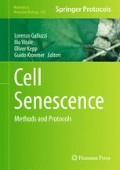Abstract
Physical and emotional stress, metabolic alterations, carcinogenesis or inflammation are conditions that can trigger oxidative stress, which is defined as a balance shift of redox reactions towards oxidation, resulting in the increase of reactive oxygen species (ROS). ROS are continuously formed in small quantities during the normal metabolism of cell, however the overproduction of ROS is cytotoxic and damages macromolecules (DNA, proteins, sugars and lipids). Polyunsaturated fatty acids (PUFAs) that are esterified in membrane or storage lipids are subject to ROS-induced peroxidation resulting in the destruction of biomembranes. Final products of lipid peroxidation (LPO) are reactive aldehydes that are relatively stable and may diffuse far from the initial site of oxidative injury and act as second messengers or free radicals. The difference between physiological and pathological oxidative stress is often the occurrence of LPO and its final toxic products. In this chapter, two classes of methods for measurement of LPO are described. The first include assays for detection of LPO at the organismal level, while the second include molecular and cellular assays that reveal the mechanistic effects of LPO on the function, morphology and viability of the cells.
Access this chapter
Tax calculation will be finalised at checkout
Purchases are for personal use only
References
Esterbauer H, Schaur RJ, Zollner H (1991) Chemistry and biochemistry of 4-hydroxynonenal, malonaldehyde and related aldehydes. Free Radic Biol Med 11:81–128
Halliwell B, Gutteridge JMC (2007) Free radicals in biology and medicine. Oxford University Press, New York
Sattler KD (2010) Handbook of nanophysics. CRC, Hoboken
Uchida K (2003) 4-Hydroxy-2-nonenal: a product and mediator of oxidative stress. Prog Lipid Res 42:318–343
Dix TA, Aikens J (1993) Mechanisms and biological relevance of lipid peroxidation initiation. Chem Res Toxicol 6:2–18
Avery SV (2011) Molecular targets of oxidative stress. Biochem J 434:201–210
Leonarduzzi G, Robbesyn F, Poli G (2004) Signaling kinases modulated by 4-hydroxynonenal. Free Radic Biol Med 37:1694–1702
Gueraud F, Atalay M, Bresgen N, Cipak A, Eckl PM, Huc L, Jouanin I, Siems W, Uchida K (2010) Chemistry and biochemistry of lipid peroxidation products. Free Radic Res 44:1098–1124
Zarkovic N (2003) 4-Hydroxynonenal as a bioactive marker of pathophysiological processes. Mol Aspects Med 24:281–291
Mihaljevic B, Katusin-Razem B, Razem D (1996) The reevaluation of the ferric thiocyanate assay for lipid hydroperoxides with special considerations of the mechanistic aspects of the response. Free Radic Biol Med 21:53–63
Katusin-Razem B, Mihaijevic B, Razem D (1990) Lipid test. Nature 345:584
Gveric-Ahmetasevic S, Sunjic SB, Skala H, Andrisic L, Stroser M, Zarkovic K, Skrablin S, Tatzber F, Cipak A, Jaganjac M, Waeg G, Gveric T, Zarkovic N (2009) Oxidative stress in small-for-gestational age (SGA) term newborns and their mothers. Free Radic Res 43:376–384
Borovic S, Rabuzin F, Waeg G, Zarkovic N (2006) Enzyme-linked immunosorbent assay for 4-hydroxynonenal-histidine conjugates. Free Radic Res 40:809–820
Lowry OH, Rosebrough NJ, Farr AL, Randall RJ (1951) Protein measurement with the Folin phenol reagent. J Biol Chem 193:265–275
Waeg G, Dimsity G, Esterbauer H (1996) Monoclonal antibodies for detection of 4-hydroxynonenal modified proteins. Free Radic Res 25:149–159
Uchida K, Kanematsu M, Sakai K, Matsuda T, Hattori N, Mizuno Y, Suzuki D, Miyata T, Noguchi N, Niki E, Osawa T (1998) Protein-bound acrolein: potential markers for oxidative stress. Proc Natl Acad Sci U S A 95:4882–4887
Cipak A, Hasslacher M, Tehlivets O, Collinson EJ, Zivkovic M, Matijevic T, Wonisch W, Waeg G, Dawes IW, Zarkovic N, Kohlwein SD (2006) Saccharomyces cerevisiae strain expressing a plant fatty acid desaturase produces polyunsaturated fatty acids and is susceptible to oxidative stress induced by lipid peroxidation. Free Radic Biol Med 40:897–906
Jaganjac M, Prah IO, Cipak A, Cindric M, Mrakovcic L, Tatzber F, Ilincic P, Rukavina V, Spehar B, Vukovic JP, Telen S, Uchida K, Lulic Z, Zarkovic N (2011) Effects of bioreactive acrolein from automotive exhaust gases on human cells in vitro. Environ Toxicol in press; DOI: 10.1002/tox.20683
Spoljaric D, Cipak A, Horvatic J, Andrisic L, Waeg G, Zarkovic N, Jaganjac M (2011) Endogenous 4-hydroxy-2-nonenal in microalga Chlorella kessleri acts as a bioactive indicator of pollution with common herbicides and growth regulating factor of hormesis. Aquat Toxicol 105:552–558
Cherkas A, Yelisyeyeva O, Semen K, Zarkovic K, Kaminskyy D, Gasparovic AC, Jaganjac M, Lutsyk A, Waeg G, Zarkovic N (2009) Persistent accumulation of 4-hydroxynonenal-protein adducts in gastric mucosa after Helicobacter pylori eradication. Coll Antropol 33:815–821
Zarkovic K, Zarkovic N, Schlag G, Redl H, Waeg G. Histological aspects of sepsis-induced brain changes in a baboon model. In: Shock, sepsis, and organ failure: fifth Wiggers Bernard Conference 1996. Springer-Verlag, Heidelberg, pp 146–162
Mihaljević B, Ražem D (2003) Monothiocyanatoiron(III) Compelx in Dichloromethane-Methanol Solvent Mixture. Croat. Chem. Acta 76:249–255
Sovic A, Borovic S, Loncaric I, Kreuzer T, Zarkovic K, Vukovic T, Wag G, Hrascan R, Wintersteiger R, Klinger R, Zurak N, Schaub RJ, Zarkovic N (2001) The carcinostatic and proapoptotic potential of 4-hydroxynonenal in HeLa cells is associated with its conjugation to cellular proteins. Anticancer Res 21:1997–2004
Author information
Authors and Affiliations
Corresponding author
Editor information
Editors and Affiliations
Rights and permissions
Copyright information
© 2013 Springer Science+Busincess Media, LLC
About this protocol
Cite this protocol
Gasparovic, A.C., Jaganjac, M., Mihaljevic, B., Sunjic, S.B., Zarkovic, N. (2013). Assays for the Measurement of Lipid Peroxidation. In: Galluzzi, L., Vitale, I., Kepp, O., Kroemer, G. (eds) Cell Senescence. Methods in Molecular Biology, vol 965. Humana Press, Totowa, NJ. https://doi.org/10.1007/978-1-62703-239-1_19
Download citation
DOI: https://doi.org/10.1007/978-1-62703-239-1_19
Published:
Publisher Name: Humana Press, Totowa, NJ
Print ISBN: 978-1-62703-238-4
Online ISBN: 978-1-62703-239-1
eBook Packages: Springer Protocols

